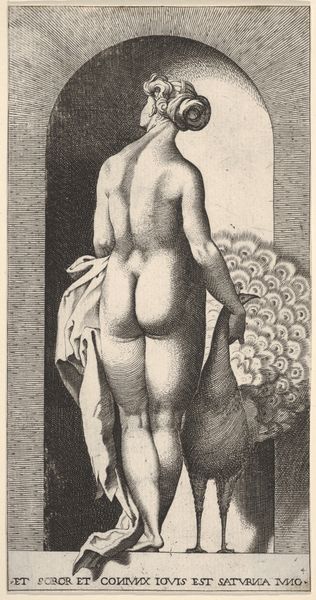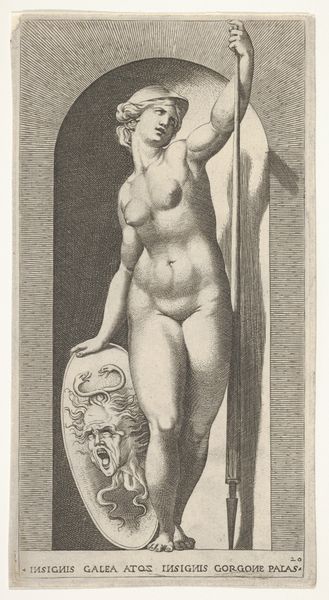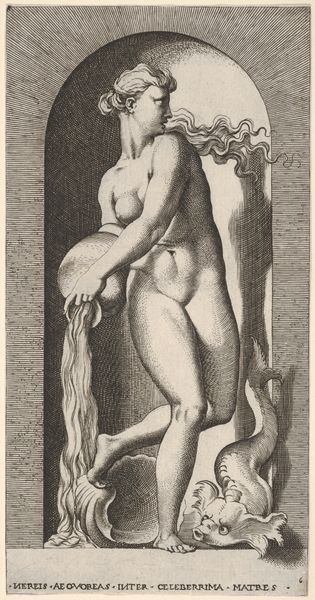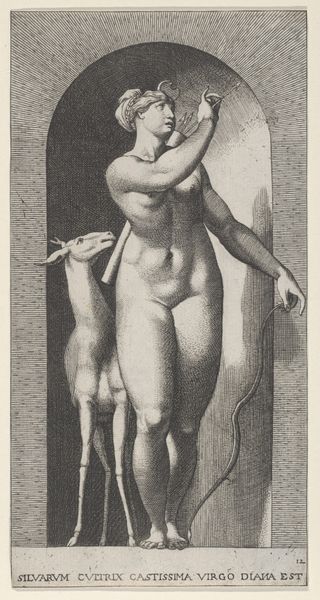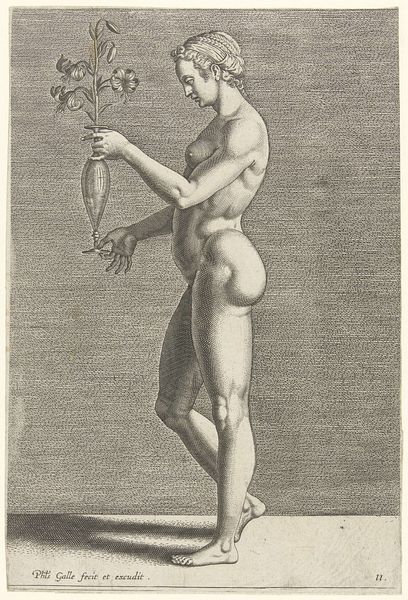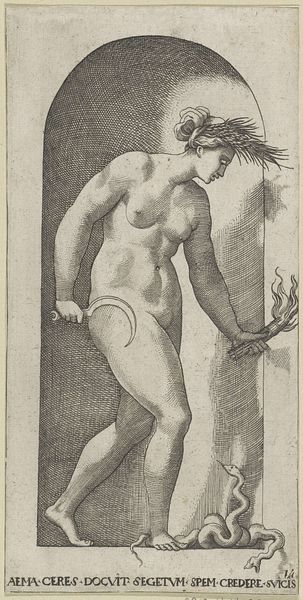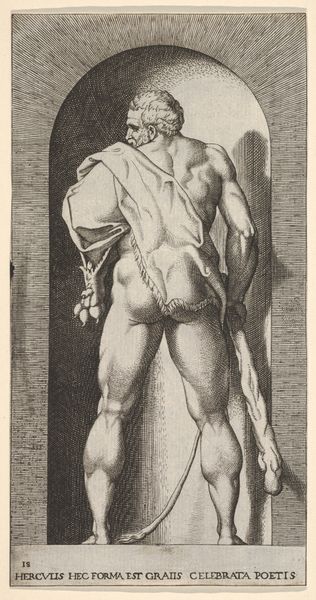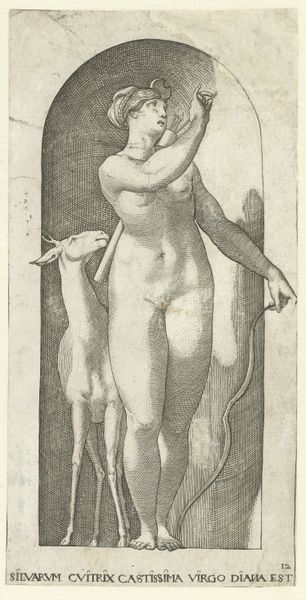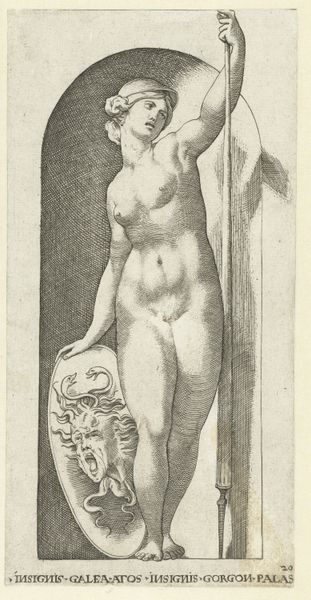
Plate 14: Ceres in a niche, facing right, standing over a two-headed snake and holding a half-moon sickle in her right hand and a torch in her left hand, from "Mythological Gods and Goddesses" 1526
0:00
0:00
drawing, print, engraving
#
drawing
#
allegory
# print
#
caricature
#
figuration
#
history-painting
#
italian-renaissance
#
nude
#
engraving
Dimensions: Sheet: 8 3/16 × 4 5/16 in. (20.8 × 11 cm)
Copyright: Public Domain
Created by Giovanni Jacopo Caraglio, around the 16th century, this engraving depicts Ceres, the Roman goddess of agriculture, standing confidently in a niche. Consider the historical context: Caraglio was working in a time of great social change. The Renaissance was in full swing, bringing with it new ideas about humanism and a renewed interest in classical antiquity. Ceres holds a sickle and a torch, symbols of harvest and light, standing over a two-headed snake, representing her power over life and death. Yet, it's important to note that in representing Ceres, Caraglio wasn't just making a picture of a goddess. He was also making a statement about the roles and expectations of women. The goddess is strong, fertile, and life-giving, but also bound by the constraints of her divine role. How might the women who viewed this print have felt about this depiction? Did it empower them, or did it reinforce existing social hierarchies? This image invites us to consider the complex interplay between gender, power, and representation in the art of the Renaissance.
Comments
No comments
Be the first to comment and join the conversation on the ultimate creative platform.
